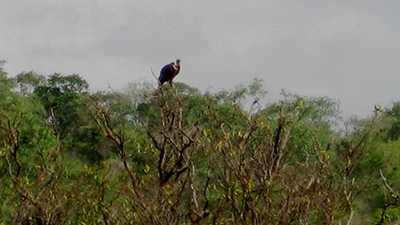A few years ago, Subbiah Bharathidasan realized he wasn’t seeing vultures circling the skies anymore. Having grown up in a leather manufacturing town in southern India, he was used to seeing large numbers of the scavenging birds which were attracted by animal carcasses.
When he looked into it, Bharathi, as he is known, discovered that vulture populations right across India, Bangladesh, Nepal, and Pakistan had gone into catastrophic decline in the late 1990s.
The cause proved to be a veterinary anti-inflammatory drug called Diclofenac, administered to cattle to reduce joint pain so that ageing animals would keep working. When cattle died with the drug still in their systems, vultures that ingested their flesh died in vast numbers from renal failure. Three vulture species crashed, with losses of between 97 and 99 percent of their populations. As a result, Asian vultures - once very common - fell into the ranks of the most endangered birds in the world.
An uphill task
With the alarm raised, governments across South Asia banned Diclofenac in 2006. Slowly, populations have been starting to recover but it’s an uphill battle - especially as some livestock owners are illegally using the human version of Diclofenac to relieve pain and inflammation in their animals. The human version of the drug still has fatal consequences for vultures.
Through the World Bank-supported Critical Ecosystem Partnership Fund, Bharathi is now leading a project in the Western Ghats area of southern India where one of the last viable wild populations of Indian vultures resides on the banks of the Moyar River.

